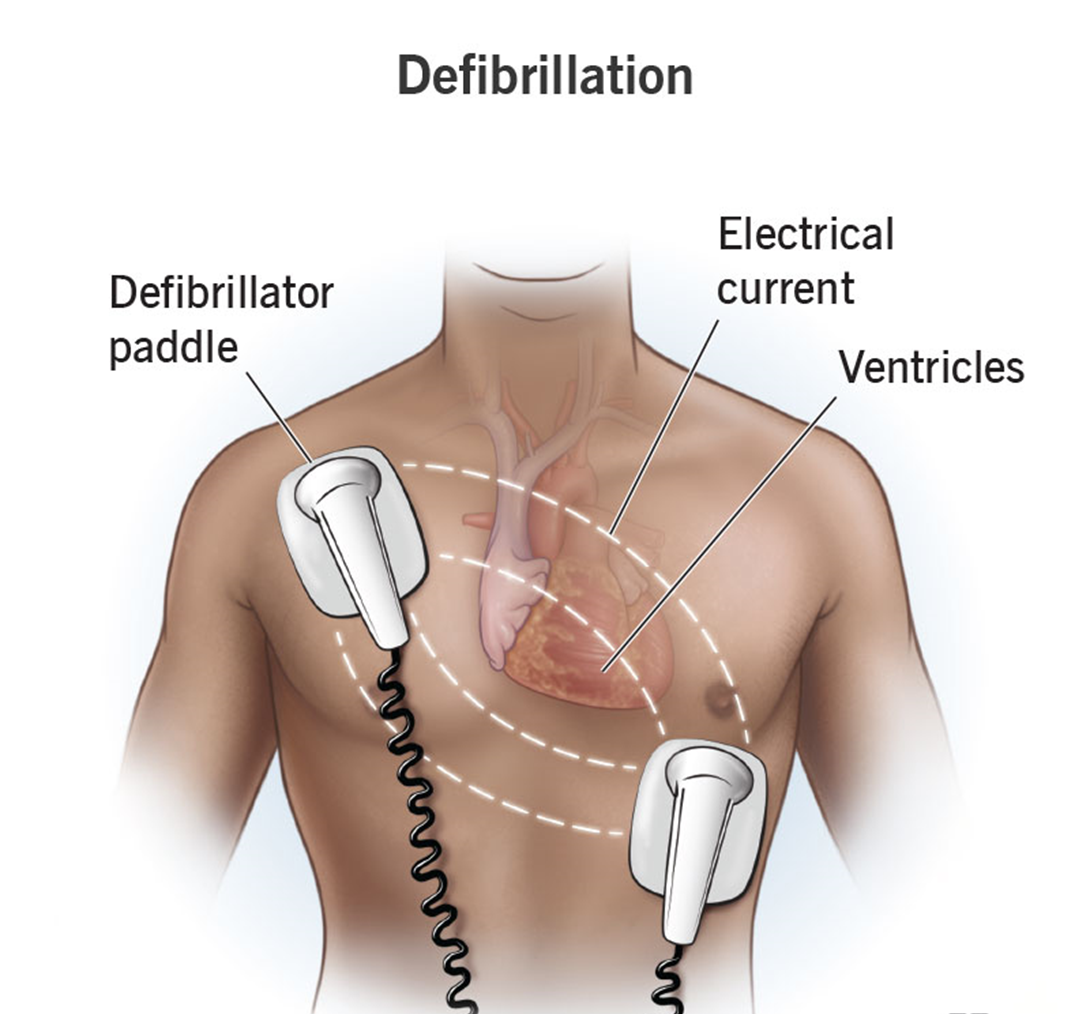A nurse is assessing a client who has a left lower arm fracture. Which of the following findings indicates impaired venous return in the client’s affected arm?
Acute pain
Ecchymosis of the surrounding skin
Increasing edema
Diminishing distal pulse
The Correct Answer is C
Choice A reason: Acute pain is expected with a fracture but does not specifically indicate impaired venous return.
Choice B reason: Ecchymosis, or bruising, can occur with a fracture due to bleeding into the tissue but is not a direct indicator of venous return issues.
Choice C reason: Increasing edema is a sign of impaired venous return as it indicates a buildup of fluid in the tissues, which can occur if the veins are not effectively returning blood to the heart.
Choice D reason: A diminishing distal pulse could indicate arterial impairment rather than venous return issues.
Nursing Test Bank
Naxlex Comprehensive Predictor Exams
Related Questions
Correct Answer is A
Explanation
Choice A reason: Defibrillation is used in the case of life-threatening cardiac rhythms, such as ventricular fibrillation or pulseless ventricular tachycardia. It is not the first line of treatment for a stable patient with VT.
Choice B reason: CPR is initiated when a patient is unresponsive and not breathing or not breathing normally, indicating cardiac arrest. It is not indicated for a patient who is stable and experiencing VT.
Choice C reason: Elective cardioversion is a procedure where an electrical shock is delivered to the heart to convert an abnormal rhythm back to a normal sinus rhythm. It is typically used for rhythms such as atrial fibrillation or atrial flutter, not first line for VT.
Choice D reason: Radiofrequency catheter ablation is a procedure that uses radiofrequency energy to destroy a small area of heart tissue that is causing rapid and irregular heartbeats. In the case of VT, this procedure is used to target the area causing the abnormal rhythm and is a common treatment for recurrent VT.

Correct Answer is B
Explanation
Choice A reason: The medication administration record is an important document, but it is not the primary source for verification before administering blood products. It is used to record the administration after the fact.
Choice B reason: The identification wristband is the priority source for verification. It contains the client's essential information, such as name and hospital ID, which must match the blood product label to ensure patient safety⁸.
Choice C reason: The order sheet contains the physician's orders, which is crucial for verifying what has been prescribed but is secondary to the identification wristband for the actual administration process.
Choice D reason: The chart contains a comprehensive record of the client's medical history and care but is not the primary source for verification when administering blood products.
Whether you are a student looking to ace your exams or a practicing nurse seeking to enhance your expertise , our nursing education contents will empower you with the confidence and competence to make a difference in the lives of patients and become a respected leader in the healthcare field.
Visit Naxlex, invest in your future and unlock endless possibilities with our unparalleled nursing education contents today
Report Wrong Answer on the Current Question
Do you disagree with the answer? If yes, what is your expected answer? Explain.
Kindly be descriptive with the issue you are facing.
